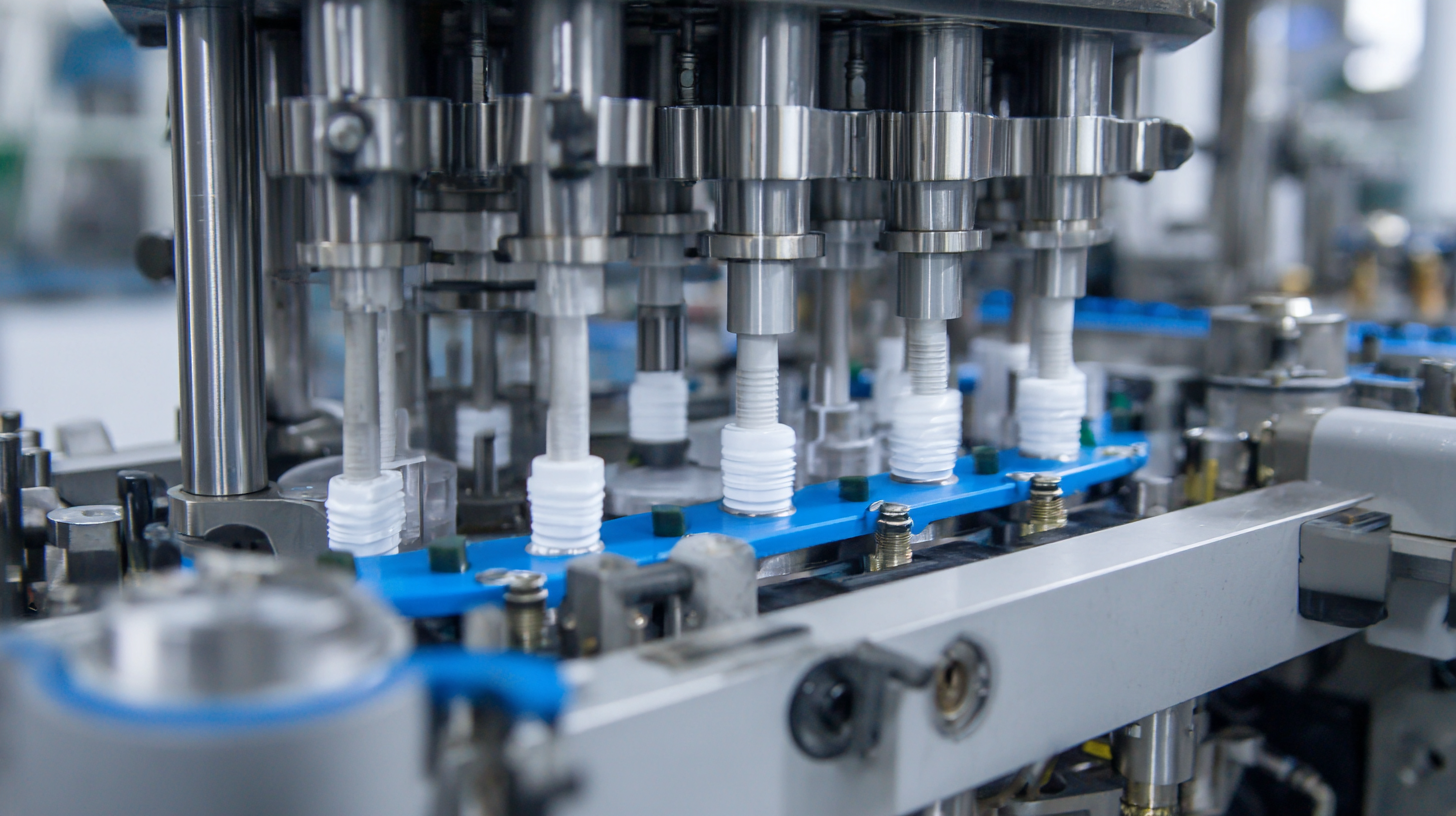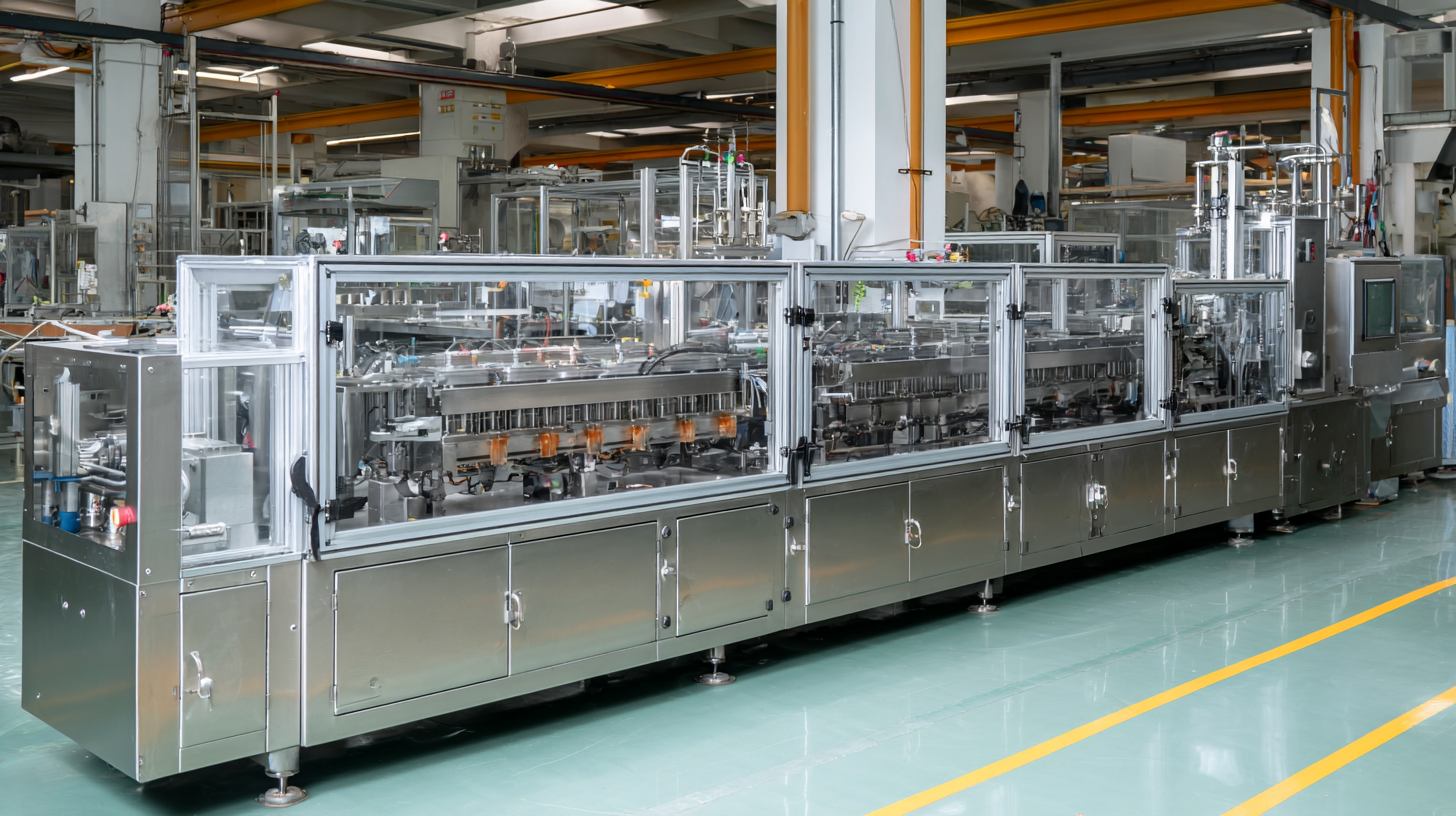Comprehensive Guide to Choosing the Best Sachet Filling Machine for Diverse Product Applications
In today's rapidly evolving market, the demand for efficient and versatile packaging solutions has never been higher, particularly in the realm of sachet filling machines. Chinese manufacturers have emerged as leaders in this domain, establishing a strong global presence with their advanced technology and innovative designs. This comprehensive guide will explore the essential factors to consider when choosing the best sachet filling machine tailored for diverse product applications, ranging from food and beverages to pharmaceuticals and cosmetics. By understanding the intricacies of different models, features, and functionalities, businesses can make informed decisions that enhance productivity and product quality. Whether you are a startup or a well-established company, selecting the right sachet filling machine is crucial for staying competitive in the global marketplace.

Emerging Technologies Shaping Sachet Filling Machines in 2025
As we look towards 2025, the landscape of sachet filling machines is poised for a significant transformation driven by emerging technologies. One of the most impactful advancements is the integration of automation and artificial intelligence. These smart machines can adapt in real-time to product variations, ensuring precision and efficiency in the filling process. This technology not only enhances production speed but also minimizes human error, making it an essential feature for manufacturers aiming for high-volume output and consistency.
Another revolutionary development is the adoption of sustainable materials and eco-friendly practices within sachet filling technologies. With growing consumer demand for environmentally responsible packaging, manufacturers are pivoting towards biodegradable and recyclable materials. Additionally, innovations such as reduction in energy consumption during the filling process signify a crucial step for the industry. The better alignment of these machines with sustainability goals not only meets regulatory standards but also appeals to increasingly eco-conscious consumers.
Key Features to Look for in Modern Sachet Filling Equipment
When selecting a sachet filling machine, it’s crucial to focus on the key features that cater to diverse product applications. Modern sachet filling machines should offer versatility in product types, enabling seamless transitions between liquids, powders, and even granular substances. This adaptability is essential, especially in industries such as cosmetics and pharmaceuticals, where consumer needs are constantly evolving. There's a growing trend towards smaller product offerings, and machines capable of managing these demands will be invaluable.
Another important aspect is the integration of advanced automation and monitoring systems. These technologies not only enhance operational efficiency but also ensure high accuracy and consistency in filling processes. Machine-level operator control features allow for real-time adjustments, minimizing downtime and maximizing productivity. As companies continue to prioritize sustainability and eco-friendly practices, choosing a machine that supports optimized recycling and reduced carbon emissions can significantly impact their environmental footprint, aligning with current market demands for responsible packaging solutions.

How to Assess the Versatility of Sachet Filling Machines for Various Products
When assessing the versatility of sachet filling machines for various product applications, it’s essential to understand the different types of materials they can handle. Sachet filling machines are designed to package a wide range of products, from powders and granules to liquids and viscous substances. This adaptability not only increases efficiency but also enhances the overall value of your packaging operation. Depending on the material used for sachets, such as polyethylene or polypropylene, the machine's compatibility with certain products may vary significantly.

Tips: When selecting a sachet filling machine, consider the size and shape of the sachets you plan to produce. Ensure that the machine can accommodate adjustments for varying product volumes. Additionally, look for machines that offer quick changeovers, as this can save time during production runs involving multiple products.
Another critical factor to evaluate is the machine's automation capabilities. High-level automation can streamline your production process, minimize human error, and improve overall output consistency. Investing in technologically advanced machines can also provide flexibility for future product launches, ensuring your operations can pivot easily to meet changing market demands.
Tips: Review the machine’s features, such as touchscreen controls and programmable settings, to enhance user experience. Evaluate the maintenance and support services offered by manufacturers, as these play a crucial role in minimizing downtime and maximizing production efficiency.
Sustainability in Sachet Filling Machine Design: Trends and Innovations
Sustainability has become a central theme in the design of sachet filling machines, as the manufacturing industry increasingly prioritizes environmentally friendly practices. Modern machines are being designed with an emphasis on reducing waste, using energy-efficient processes, and integrating recyclable materials. Manufacturers are innovating by incorporating features such as automatic energy-saving modes and programmable settings that optimize the use of resources. This trend not only helps reduce the carbon footprint of production but also addresses the growing consumer demand for sustainable packaging solutions.
In addition to energy efficiency, advancements in technology are enabling the use of biodegradable and compostable materials in sachet production. Many companies are exploring new materials that decompose naturally, minimizing plastic waste in landfills. Furthermore, the integration of smart technology in filling machines allows for precise control over material usage, ensuring that only necessary amounts are utilized during the packaging process. This not only enhances the sustainability of the products themselves but also positions businesses favorably in a market that increasingly values ecological responsibility. As these trends and innovations continue to evolve, they promise a more sustainable future for sachet packaging across various industries.
Cost-Benefit Analysis: Investing in Advanced Sachet Filling Solutions
When considering the investment in advanced sachet filling solutions, a thorough cost-benefit analysis is essential for businesses looking to enhance their production capabilities. The initial financial outlay for state-of-the-art sachet filling machines can be significant, but the long-term benefits often outweigh these upfront costs. By automating the filling process, companies can significantly reduce labor costs, minimize errors, and increase production speed, thereby improving overall efficiency. Additionally, advanced machines offer greater flexibility in handling diverse product applications, ensuring that businesses can adapt quickly to market demands without substantial additional expenses.
Moreover, businesses should evaluate the potential return on investment (ROI) by considering factors such as reduced waste, improved product quality, and the ability to penetrate new markets with innovative packaging solutions. By investing in high-quality sachet filling machines, companies can enhance their brand reputation and customer satisfaction while also reducing downtime and maintenance costs. Ultimately, a well-informed decision regarding sachet filling technology can lead to sustainable growth and a competitive edge in the marketplace, making it a worthwhile endeavor for businesses committed to excellence in their operations.
Comprehensive Guide to Choosing the Best Sachet Filling Machine for Diverse Product Applications
| Product Type | Filling Speed (sachets/min) | Machine Dimensions (LxWxH in mm) | Cost Range (USD) | Return on Investment (ROI) Period (months) | Maintenance Frequency (months) |
|---|---|---|---|---|---|
| Powdered Products | 30 | 1500 x 800 x 1800 | $15,000 - $25,000 | 12 | 6 |
| Liquid Products | 25 | 1600 x 900 x 2000 | $20,000 - $30,000 | 14 | 8 |
| Granulated Products | 40 | 1400 x 850 x 1900 | $18,000 - $28,000 | 11 | 7 |
| Tablets & Capsules | 20 | 1550 x 900 x 1850 | $22,000 - $32,000 | 13 | 5 |
